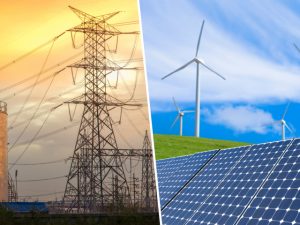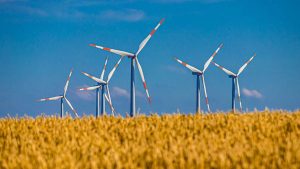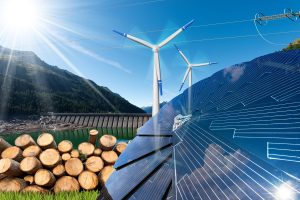The Shift from Fossil Fuels to Renewables
As we stand on the brink of a new era in global power dynamics, the shift from fossil fuels to renewable energy sources is becoming increasingly apparent. The world is witnessing a Renewable Renaissance that is transforming the way we produce and consume energy, and reshaping the global power landscape in the process.
One of the key drivers of this shift is the urgent need to reduce our reliance on fossil fuels, which are not only finite resources but also major contributors to climate change. By fueling renewable energy sources such as solar and wind power, we are not only reducing our carbon footprint but also paving the way for a more sustainable and environmentally-friendly future.
The Renewable Renaissance is not just about adopting cleaner energy sources; it is also about redefining the global power dynamics. As countries around the world invest in renewable energy infrastructure, they are reducing their dependence on traditional power sources and gaining more control over their energy security. This shift is leveling the playing field and giving smaller nations the opportunity to become major players in the global energy market.
Solar and Wind Technologies Leading the Charge

Solar and wind technologies are at the forefront of the Renewable Renaissance, leading the charge in reshaping the global power landscape. These renewable energy sources are not only abundant and environmentally-friendly but also increasingly cost-effective, making them attractive options for countries looking to reduce their carbon emissions and secure their energy future.
Solar power, in particular, has seen a surge in popularity in recent years, thanks to advancements in technology and falling costs. With solar panels becoming more efficient and affordable, countries around the world are harnessing the power of the sun to generate electricity and reduce their reliance on fossil fuels.
Wind power is another key player in the renewable energy sector, with wind turbines popping up in fields and offshore locations across the globe. Wind energy is clean, renewable, and abundant, making it a viable alternative to traditional power sources. By harnessing the power of the wind, countries can reduce their carbon emissions and move towards a more sustainable energy future.
Economic Impacts of Renewable Energy
The Renewable Renaissance is not just reshaping global power dynamics; it is also having a significant impact on the global economy. As countries invest in renewable energy infrastructure, they are creating new jobs, stimulating economic growth, and reducing their reliance on expensive fossil fuels.
Renewable energy sources such as solar and wind power are not only cleaner and more sustainable but also increasingly cost-effective. By fueling the growth of these technologies, countries can reduce their energy costs, boost their economic competitiveness, and create new opportunities for innovation and investment.
The shift towards renewable energy is also driving down the cost of electricity, making it more affordable for consumers and businesses alike. As countries transition to cleaner energy sources, they are reducing their dependence on volatile fossil fuel markets and insulating themselves from price fluctuations and supply disruptions.
Policy and Regulatory Frameworks Supporting Renewables

One of the key drivers of the Renewable Renaissance is the support of policy and regulatory frameworks that promote the growth of renewable energy sources. Governments around the world are implementing policies that incentivize the development of solar and wind technologies, reduce barriers to entry for renewable energy projects, and create a level playing field for clean energy sources.
Policy frameworks drive the Renewable Renaissance worldwide by setting targets for renewable energy deployment, providing financial incentives for renewable energy projects, and establishing regulations that support the growth of clean energy technologies. By creating a supportive policy environment, countries can accelerate the transition to renewable energy and drive down carbon emissions.
Regulatory support is also crucial for fueling the growth of renewable energy. By streamlining the permitting process, reducing red tape, and providing financial incentives for renewable energy projects, governments can create a more favorable environment for clean energy technologies to thrive. Regulatory frameworks that support renewables are essential for driving investment, innovation, and growth in the renewable energy sector.
Technological Innovations in Renewable Energy
Technological innovations are playing a key role in reshaping global power dynamics and fueling the growth of renewable energy sources. The Renewable Renaissance is driving advancements in solar and wind technologies, making these clean energy sources more efficient, reliable, and cost-effective than ever before.
Solar and wind technologies are at the forefront of the Renewable Renaissance, with new innovations and breakthroughs driving down costs and increasing efficiency. From more efficient solar panels to larger and more powerful wind turbines, technological advancements are making renewable energy sources more competitive with traditional power sources.
Innovations in energy storage are also helping to overcome one of the key challenges of renewable energy – intermittency. By developing better storage solutions, such as batteries and pumped hydro storage, countries can store excess energy generated by solar and wind sources and use it when the sun is not shining or the wind is not blowing. These technological innovations are key to unlocking the full potential of renewable energy and driving the transition to a cleaner, more sustainable energy future.
Global Investments in Renewable Infrastructure
As the Renewable Renaissance gathers momentum, countries around the world are investing heavily in renewable energy infrastructure. From solar farms to wind parks, countries are building the infrastructure needed to harness the power of the sun and wind and reduce their reliance on fossil fuels.
Global investments in renewable infrastructure are fueling the growth of solar and wind technologies, driving down costs, and increasing the availability of clean energy sources. By investing in renewable energy projects, countries can create new jobs, stimulate economic growth, and reduce their carbon emissions.
The shift towards renewable energy is also attracting significant investment from the private sector, with companies and investors pouring billions of dollars into clean energy projects. From utility-scale solar farms to community wind projects, the global investment in renewable infrastructure is driving the transition to a more sustainable energy future and reshaping the global power landscape in the process.
Challenges in Scaling Renewable Solutions
While the Renewable Renaissance is transforming the global power dynamics, it is not without its challenges. Scaling renewable solutions to meet the growing demand for clean energy is a complex and multifaceted task that requires overcoming a number of obstacles and barriers.
One of the key challenges in scaling renewable solutions is the intermittency of solar and wind power. Unlike traditional power sources, such as coal and natural gas, solar and wind energy sources are dependent on weather conditions and can be unpredictable. Developing energy storage solutions and grid flexibility is essential for overcoming this challenge and ensuring a reliable and stable energy supply.
Another challenge in scaling renewable solutions is the lack of infrastructure and transmission capacity needed to support the growth of solar and wind technologies. Building the necessary infrastructure, such as transmission lines and grid connections, is essential for integrating renewable energy sources into the existing power system and maximizing their potential.
Future Prospects of Global Power Redefinition

As we look to the future, the prospects of global power redefinition through the Renewable Renaissance are promising. By fueling renewable energy with solar and wind technologies, countries can reduce their carbon emissions, create new opportunities for economic growth, and secure their energy future.
The Renewable Renaissance is reshaping global power dynamics by reducing our dependence on fossil fuels, promoting sustainable development, and driving innovation in clean energy technologies. By embracing renewable energy sources and investing in the necessary infrastructure, countries can transition to a more sustainable and environmentally-friendly energy system that benefits both present and future generations.
In conclusion, the shift from fossil fuels to renewables is not just a necessity but also an opportunity to redefine global power dynamics and create a more sustainable and prosperous future for all. By fueling renewable energy with solar and wind technologies, we can pave the way for a cleaner, greener, and more resilient energy future that benefits both people and the planet.










